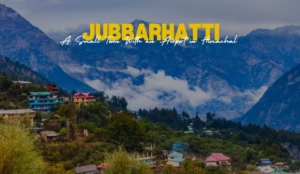In the remote village of Lhalung in the Spiti Valley of Himachal Pradesh, Lhalung Monastery stands as one of the oldest and most revered monasteries in the region. Often referred to as the “Land of the Gods,” the Spiti Valley is a high-altitude desert known for its rugged beauty, ancient monasteries, and profound spiritual heritage. Lhalung Monastery, with its rich history, architectural grandeur, and serene atmosphere, offers a unique glimpse into the spiritual and cultural fabric of the Himalayan region.
History and Significance
Lhalung Monastery, also known as Lhalun Monastery, was founded in the 10th century by the renowned Buddhist scholar and teacher Lotsawa Rinchen Zangpo, often referred to as the “Great Translator.” Rinchen Zangpo is credited with introducing Buddhism to the western Himalayas, and Lhalung Monastery is one of the 108 monasteries he is said to have established during his lifetime.
The name “Lhalung” translates to “Land of the Gods” or “Divine Land,” reflecting the deep spiritual resonance of the site. According to local legends, the location for the monastery was chosen by the Deo (deity) who resides in the sacred tree near the monastery. It is believed that the deity planted a tree at this site, signaling it as a place of spiritual significance.
The monastery also holds an important place in local folklore, where it is said that the color of the sacred tree changes to predict the fortunes of the village. A green tree signifies prosperity, while a yellow or brown hue indicates misfortune.
Architectural Splendor of Lhalung Monastery
Temple Complex
Lhalung Monastery consists of several small temples, stupas, and prayer halls, each imbued with historical and spiritual importance. The main temple is known as the Golden Temple (Serkhang) due to its exquisite golden frescoes. These paintings, which adorn the walls and ceilings, depict scenes from Buddhist scriptures, celestial beings, and various Buddhas, embodying the intricate artistry of the Tibetan Buddhist tradition.
Clay Statues
One of the most remarkable features of the monastery is its collection of ancient clay statues. These statues represent deities, protectors, and bodhisattvas, meticulously crafted and preserved for centuries. Each figure is adorned with vibrant colors and intricate details, reflecting the devotional craftsmanship of the artists.
Sacred Tree
Adjacent to the monastery, the sacred tree serves as a spiritual barometer for the local villagers. It is believed that this tree is imbued with divine energy and connects the physical world with the spiritual realm.
Spiritual Practices and Festivals
Daily Rituals
The monastery is an active center of worship and meditation. Monks perform daily prayers, chanting mantras, and lighting butter lamps to honor the deities. The peaceful atmosphere of Lhalung Monastery provides an ideal setting for introspection and spiritual growth.
Festivals
Lhalung Monastery is a hub of cultural and religious festivities, especially during the annual Cham Dance Festival, where masked monks perform ritualistic dances to ward off evil spirits and bring blessings to the community. This vibrant celebration showcases the deep-rooted traditions of Tibetan Buddhism and offers visitors a chance to witness the spiritual fervor of the region.
Natural Beauty Surrounding Lhalung Monastery
Perched at an altitude of approximately 3,658 meters (12,000 feet), Lhalung Monastery is surrounded by the stark yet stunning landscape of the Spiti Valley. Snow-capped peaks, rugged terrains, and vast expanses of barren land create a breathtaking backdrop. The pristine environment and the monastery’s serene ambiance make it a haven for travelers seeking solitude and inspiration.
How to Reach Lhalung Monastery
By Road
The most common way to reach Lhalung Monastery is via road. The village of Lhalung is approximately 14 kilometers from Kaza, the administrative headquarters of Spiti Valley. From Kaza, visitors can hire taxis or take local buses to reach the monastery.
By Air
The nearest airport is Bhuntar Airport in Kullu, located about 250 kilometers away. From the airport, travelers can hire a taxi or take a bus to reach Kaza, followed by a journey to Lhalung.
By Train
The closest railway station is in Joginder Nagar, approximately 350 kilometers from Kaza. From there, road transport is the only option to reach the monastery.
Best Time to Visit
The best time to visit Lhalung Monastery is between May and October, when the roads are accessible and the weather is pleasant. During winter, heavy snowfall often cuts off the Spiti Valley from the rest of the world.
Nearby Places to Explore
1. Dhankar Monastery
Located about 38 kilometers from Lhalung, Dhankar Monastery is perched atop a cliff overlooking the confluence of the Spiti and Pin rivers. Known for its stunning location and ancient murals, it is a must-visit site for history and architecture enthusiasts.
2. Kaza
The bustling town of Kaza serves as the gateway to Spiti Valley and is home to various attractions, including the Sakya Tangyud Monastery and vibrant local markets.
3. Pin Valley National Park
Situated approximately 30 kilometers from Lhalung, Pin Valley National Park is a paradise for wildlife lovers. It is home to rare species like the snow leopard, ibex, and Himalayan fox.
4. Key Monastery
About 30 kilometers from Lhalung, Key Monastery is the largest monastery in Spiti Valley. Its impressive architecture and panoramic views make it one of the most popular tourist destinations in the region.
5. Kibber Village
Known for its high altitude wildlife sanctuary and breathtaking landscapes, Kibber is a picturesque village located near Lhalung.
6. Langza Village
Langza, a fossil-rich village situated about 22 kilometers from Lhalung, is famous for its Buddha statue overlooking the valley and stunning views of the Chau Chau Kang Nilda peak.
Tips for Visiting Lhalung Monastery
- Acclimatize Properly: Due to the high altitude, spend a day or two acclimatizing in Kaza before visiting Lhalung.
- Dress Modestly: Respect the religious significance of the monastery by dressing modestly.
- Carry Essentials: Pack warm clothing, sunscreen, and plenty of water, as the weather can be unpredictable.
- Seek Permission: Always ask for permission before taking photographs inside the monastery.
- Respect Local Customs: Follow the guidelines provided by the monks and respect the sanctity of the monastery.
Conclusion
Lhalung Monastery is more than just a spiritual sanctuary; it is a testament to the rich cultural heritage and enduring faith of the Spiti Valley. Its historical significance, stunning architecture, and serene location make it a must-visit destination for travelers seeking a deeper connection with the Himalayas and Tibetan Buddhism. Whether you’re an adventurer, a spiritual seeker, or a history enthusiast, Lhalung Monastery offers an unforgettable journey into the heart of the Himalayas.
FAQs About Lhalung Monastery
1. Why is Lhalung Monastery famous?
Lhalung Monastery is famous for its rich history, being one of the oldest monasteries in Spiti Valley, and its unique architectural features, including ancient clay statues and golden frescoes.
2. What is the best time to visit Lhalung Monastery?
The best time to visit is from May to October, when the weather is pleasant, and the roads are accessible.
3. How far is Lhalung Monastery from Kaza?
Lhalung Monastery is located approximately 14 kilometers from Kaza, making it a short and scenic drive.
4. Are there accommodations available near Lhalung Monastery?
Yes, visitors can find homestays and guesthouses in Lhalung Village. Alternatively, Kaza offers a wider range of accommodations.
5. Can I photograph the interiors of the monastery?
Photography is generally allowed outside the monastery, but permission is required to photograph the interiors.
6. Is a guide necessary to visit Lhalung Monastery?
While a guide is not mandatory, hiring one can enhance your experience by providing insights into the history and significance of the monastery.





